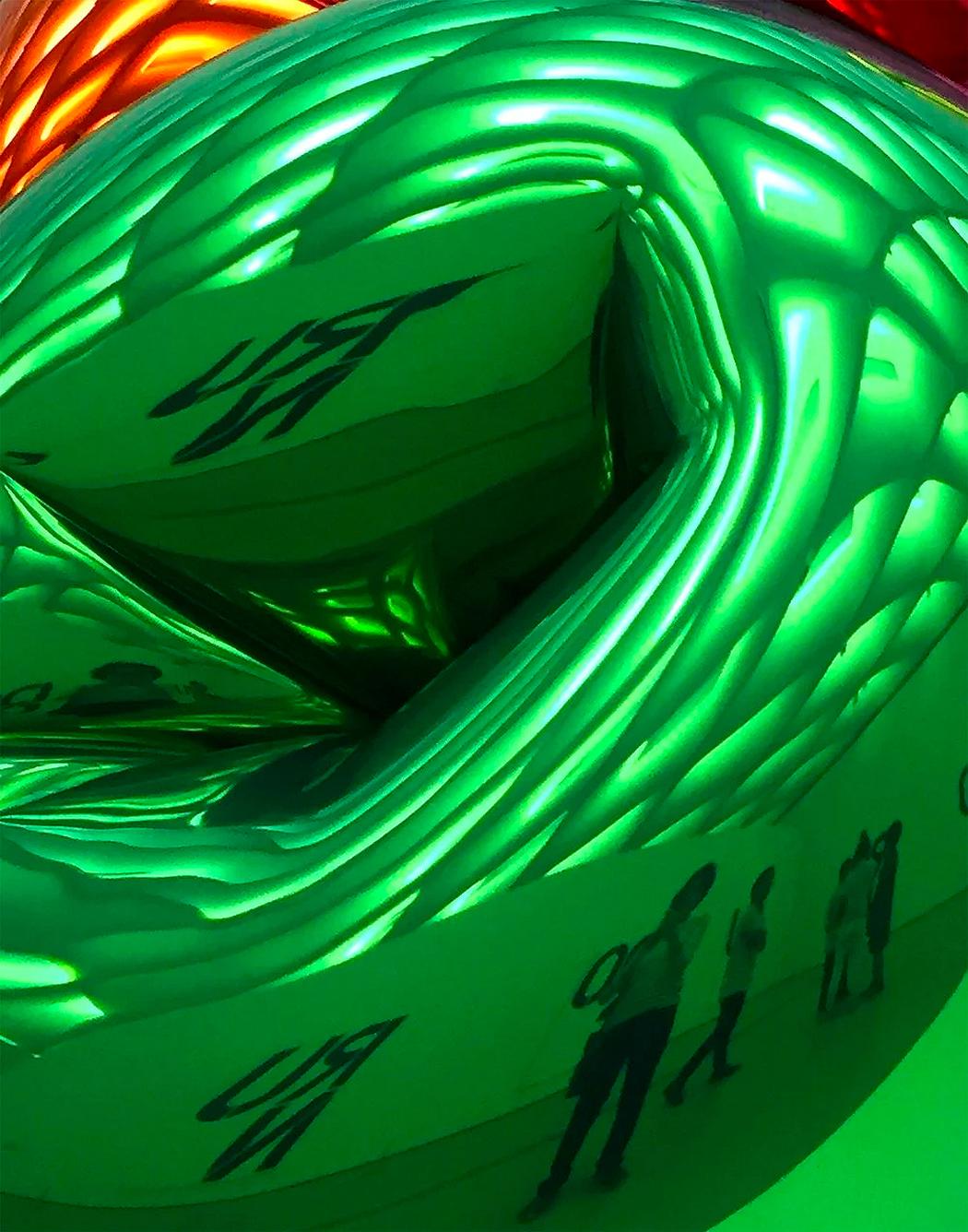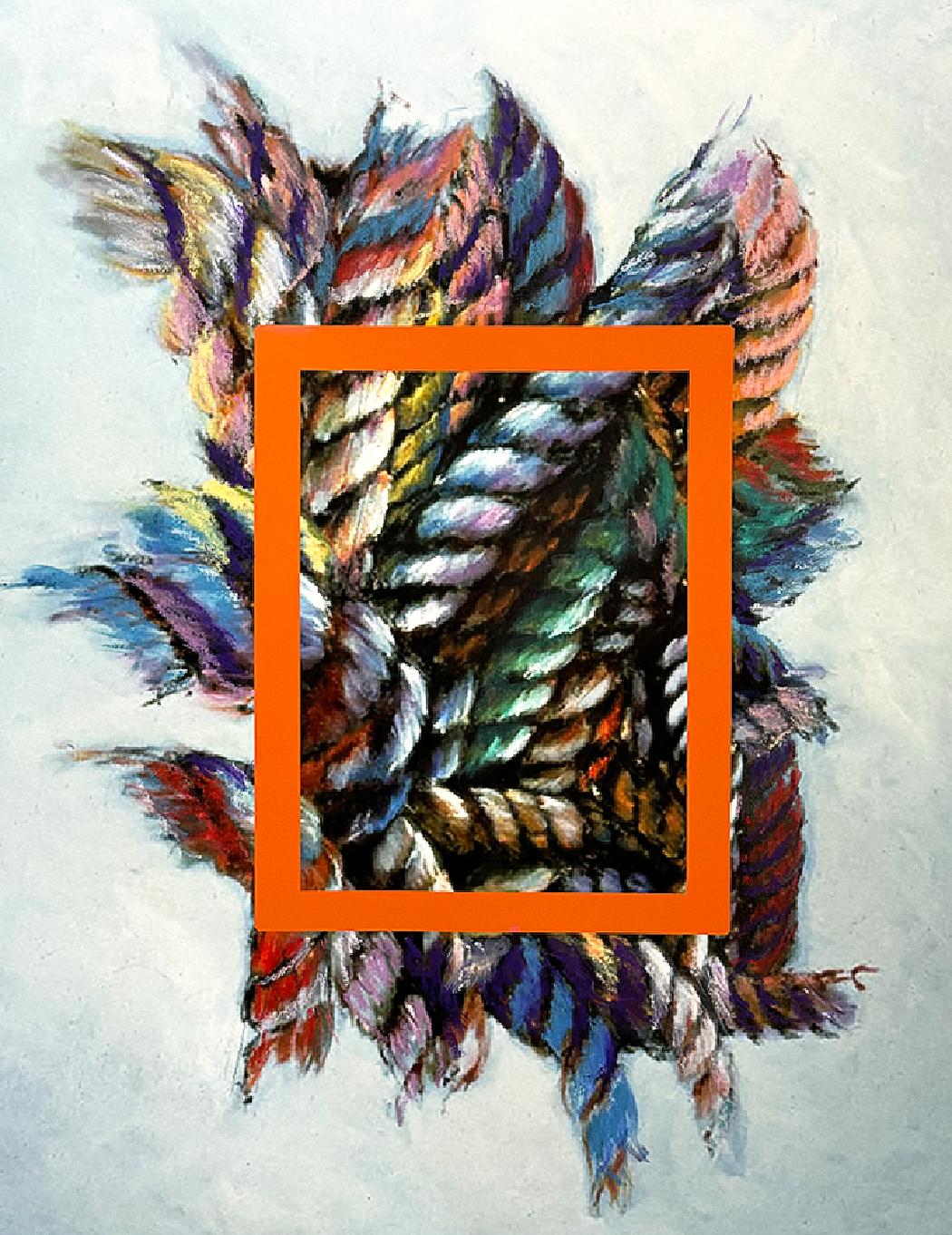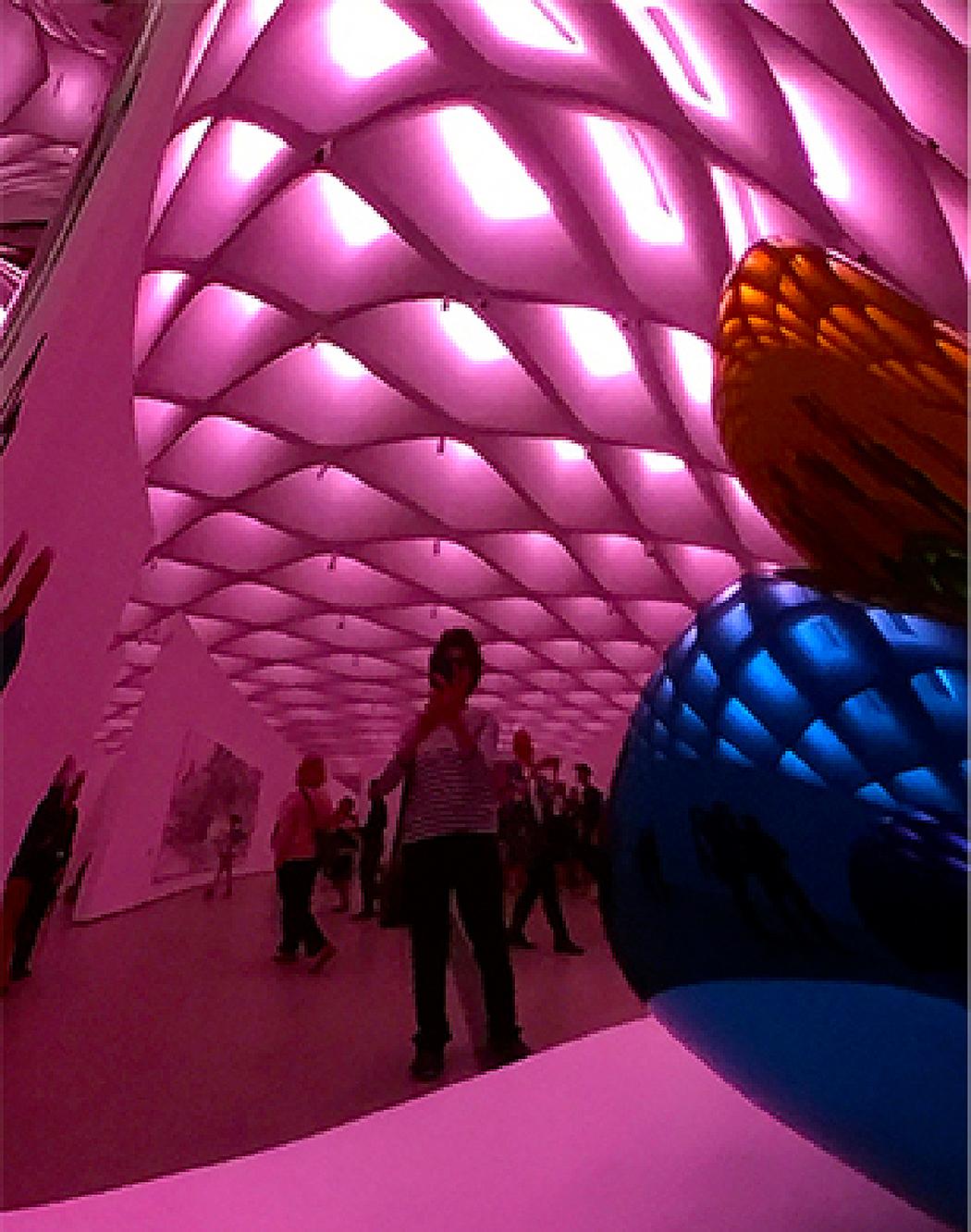Elizabeth Sher
You began your career working with fine art printmaking and oil painting before moving into mixed media and digital work. What motivated that evolution in your artistic practice?
I’ve always loved experimenting with new “toys” for artists. When technology first entered the art world, especially in still images, it was a hard sell. Some people were appalled – just as many are now with the emergence of AI in art. I haven’t ventured into that realm myself, though I know artists doing fascinating work with it.
It helps to remember that when photography was new, the major artists of the time all “played” with it. They didn’t all become photographers, but they were intrigued by what it could do and how it might influence their art. Degas’ cropped horse paintings, for example, could not have happened without the camera. And yet it took more than a century for photography to be accepted as a true fine art medium. People resist change; there were even arguments about whether acrylics were legitimate compared to oil paint.
Digital tools opened new creative possibilities for me, allowing me to do things that would have been impossible otherwise. Still, I always begin with an analog image, whether a photograph, drawing, or painting, and then manipulate it digitally to arrive at the final work. I also continue to make images entirely without technology. My foundation is in painting, drawing, and printmaking, and I still love the tactile experience of mark-making and materials.
 Elizabeth Sher | Self Portrait Still a Sucker
Elizabeth Sher | Self Portrait Still a Sucker
Nature and technology seem to coexist and compete in your work. How do you approach balancing these two forces?
I have a small cottage on the Russian River in Sonoma County, six miles from the Pacific Ocean. Being surrounded by trees and water provides a perfect counterpoint to my industrial neighborhood in Oakland. That duality, nature versus technology, is a conversation that runs through my work.
To explore it, I created a series called Crossing the Digital Divide. At the beach, I photographed large rocks where I perceived images of heads and animals. In the studio, I combined those photos with paint, emphasizing their anthropomorphic qualities and incorporating enlarged pixels into the compositions. The tension between the organic and the digital became a metaphor for coexistence and competition between nature and technology.
Humor and feminist consciousness are central elements of your art. How do these themes emerge during your creative process?
When I first learned about feminism, I thought, “Ah! So that’s what the problem has been – sexism!” It was a revelation, and it shaped both my art and my teaching. During my long tenure at CCA, I tried to be a mentor and role model for all my students, but especially for the women.
Although I’m a serious person, I’ve always had the curse (or the blessing) of being easily amused. I see humor (or dark humor) in most things and believe that laughter is the best medicine. Humor can open doors that blunt force can’t. Back when I was in school, we were told, “Art isn’t funny.” My education was rich in color, composition, and line quality, but firmly rooted in the white, male, Eurocentric canon.
Later, I met several brilliant women narrative painters whose work was both hilarious and beautifully constructed. Still, painting humor didn’t quite work for me. Then I made my first film, The Training, a short mock “how-to” on toilet training your child. When audiences laughed exactly where I wanted them to, I realized I had found my medium for humor. While there is sometimes wit and playfulness in my two-dimensional work and artist books, humor truly comes alive for me in moving images.
 Elizabeth Sher | Rebound
Elizabeth Sher | Rebound
You have an impressive history as both an artist and educator. How has teaching at CCA shaped your artistic vision?
I think I’ve learned as much from my students as they’ve learned from me. Their energy, curiosity, and willingness to experiment have inspired me continuously. Teaching also deepened my technical knowledge, especially in areas like perspective, which I had to learn in order to teach it. Collaborating with colleagues on reviews and committees further expanded my understanding of art from multiple angles.
I never sought a leadership role at CCA because my art practice always came first. Balancing teaching, family, and studio time wasn’t always easy. Sometimes it meant skipping family outings, openings, or lectures, but making time for my own creative work was essential. The studio has always been my true center.
As both a filmmaker and visual artist, what do moving images allow you to express that still imagery does not—and vice versa?
Time and timing are what distinguish moving images from still ones. Juxtaposed scenes create their own rhythm and narrative. Humor also comes across more naturally in film, and I love that audiences laugh exactly where I hope they will.
When I began making films (long before the internet, TikTok, or Instagram) many people found “art” intimidating. But everyone was comfortable with movies and TV. That broader, more democratic audience appealed to me.
The gallery world, then and now, can be hierarchical, subjective, and often sexist. Having a show in a bar or café was considered beneath a museum exhibition. But I could screen a film anywhere: in a bar, at a college, or in a space I rented myself. I could promote it, reach hundreds of viewers, and even get it shown on television. That kind of freedom was thrilling.
Still, I remain deeply tied to visual art. I love looking at it, and I’m always amazed when an image I make, entirely from my own impulse, resonates with someone else. Art’s ability to connect across time and culture is endlessly powerful.

Your works are included in major public collections and have been shown internationally. How do different audiences respond to your blend of technology and personal narrative?
When I first began integrating technology into my still and moving images, it was met with skepticism, much like the current debate around AI. Digital tools have since opened extraordinary possibilities, but for me, they’re always in service of the image. I still begin with an analog source – a photo, drawing, or painting – and build from there. I also continue to make work entirely by hand.
With film, technology has made editing and special effects far easier, but the foundation must always be a strong narrative and well-shot footage. As the saying goes, “garbage in, garbage out.” Fortunately, audiences tend to respond to the work itself rather than the tools behind it, which is exactly what I hope for.
Making films helped me find my voice. I didn’t know the rules when I started, so I was free to ignore them. That experience liberated me from the constraints of the Western canon, so rooted in Eurocentrism and sexism, and allowed me.


Leave a Reply